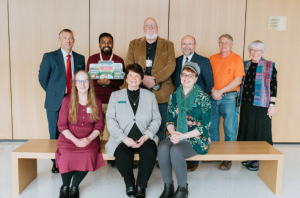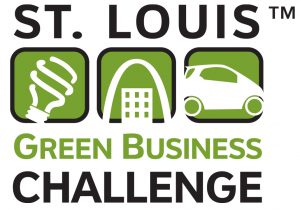The St. Louis Green Business Challenge remained a leader of sustainability in the St. Louis region last year by continuing to deliver Triple Bottom Line results (fiscal, social and environmental) to businesses of all types and sizes across the bi-state metro area. Like the Clean Air Partnership, the Challenge is focused on encouraging and inspiring voluntary steps to help improve the environment and air quality in the region, and we’re pleased to highlight its tremendous impact by recognizing some of the impressive green innovations underway by several local organizations and municipalities in 2023.
The Challenge is a program of the Missouri Botanical Garden and supports integration of sustainability measures into the kinds of everyday operational practices common to every business. Participants identify and adopt strategies that improve financial performance and engage employees in voluntary measures to reduce environmental impacts. Since the program launched in 2010, 270 businesses, non-profits and municipalities have joined the Challenge. This participation has engaged over 160,000 employees and nearly 570,000 residents for a total of over 730,000 individuals influenced by this work. Their ongoing commitment to sustainability holds strong as 60% of these companies have participated in the Challenge for two or more years and 50% for three years or more.
In 2023, 56 companies, non-profits, institutions and governmental bodies participated in the St. Louis Green Business Challenge. An astounding 100% of these participants formed a Green Team to lead sustainability efforts, established or are in the process of developing a sustainability policy, kept up sustainability communications with colleagues or constituents, and either started or maintained workplace recycling, even during remote working. Furthermore, 99% of participants continued or added to Special Waste Stream Recycling and 98% provided Green Learning opportunities or Green-At-Home resources for employees.
Having now wrapped its 14th year, Challenge activity influences the business, higher education, local government and non-profit sectors of the St. Louis regional economy. The program works for building owners and tenants, supporting companies new to sustainability concepts, those already engaged and those seeking to improve, as well as high performing multi-year participants. 2023 Challenge companies also benefitted from customized coaching, including annual site visits provided by expert staff of the EarthWays Center, the Garden’s sustainability division. These services supported participating Green Teams in efficient and cost-effective sustainability work through policies and practices, in accord with each company’s unique goals and culture.
During the Challenge, participants compete with themselves to boost sustainability performance. Last year, the Challenge piloted use of an online scoring platform provided through a grant from U.S. EPA, with checklists that delivered guidance to Green Team planning and action, but not scores. With an impressive array of outcomes reported, the Challenge equally honored the commitment, persistence, and resourceful action of all participants. We’ll be profiling several of these standouts in the coming year so you can learn more.
Challenge 2024 registration opens February 1st. For more information on how to get your company or municipality involved in the St. Louis Green Business Challenge/Green Cities Challenge, subscribe to the Challenge’s bi-monthly E-newsletter here or visit stlouisgreenchallenge.com. To learn more about the link between sustainability and air quality, be sure to check out our website, like us on Facebook or follow us on Twitter at @gatewaycleanair.



